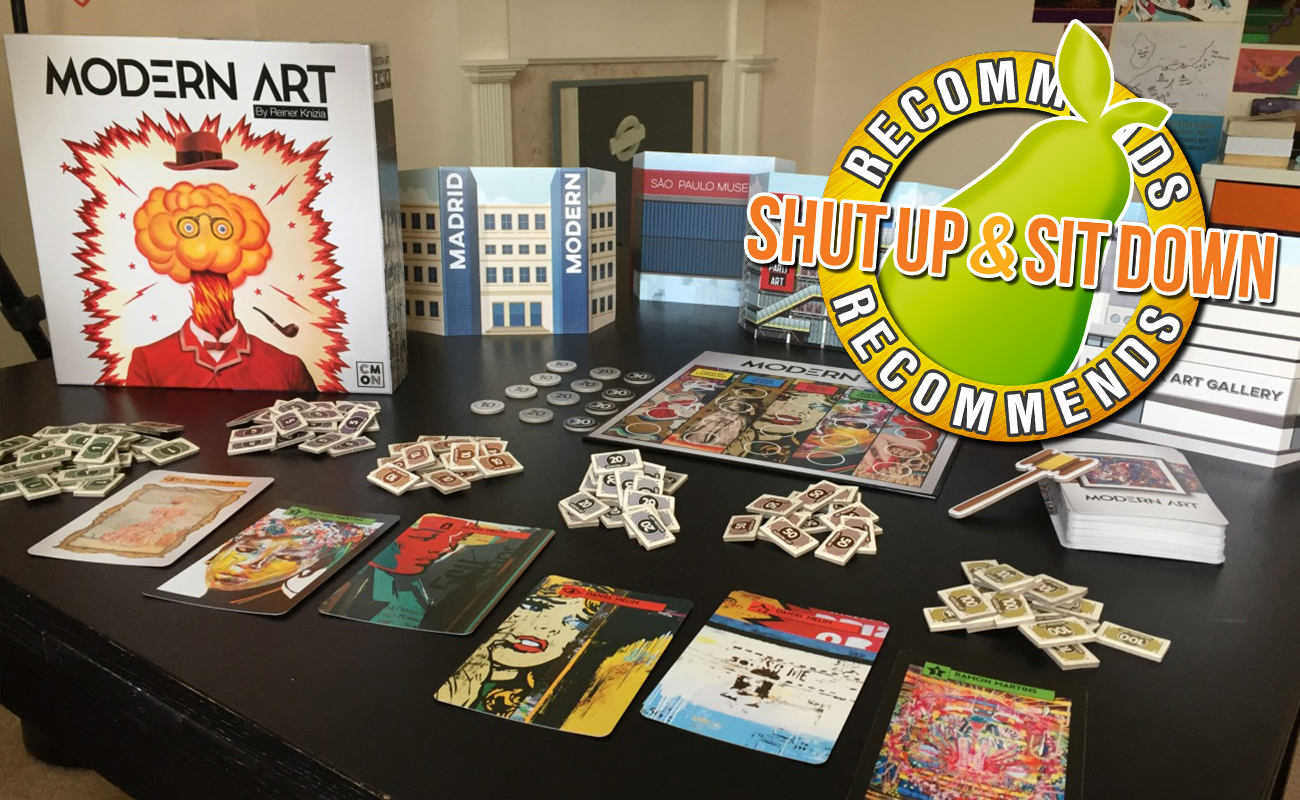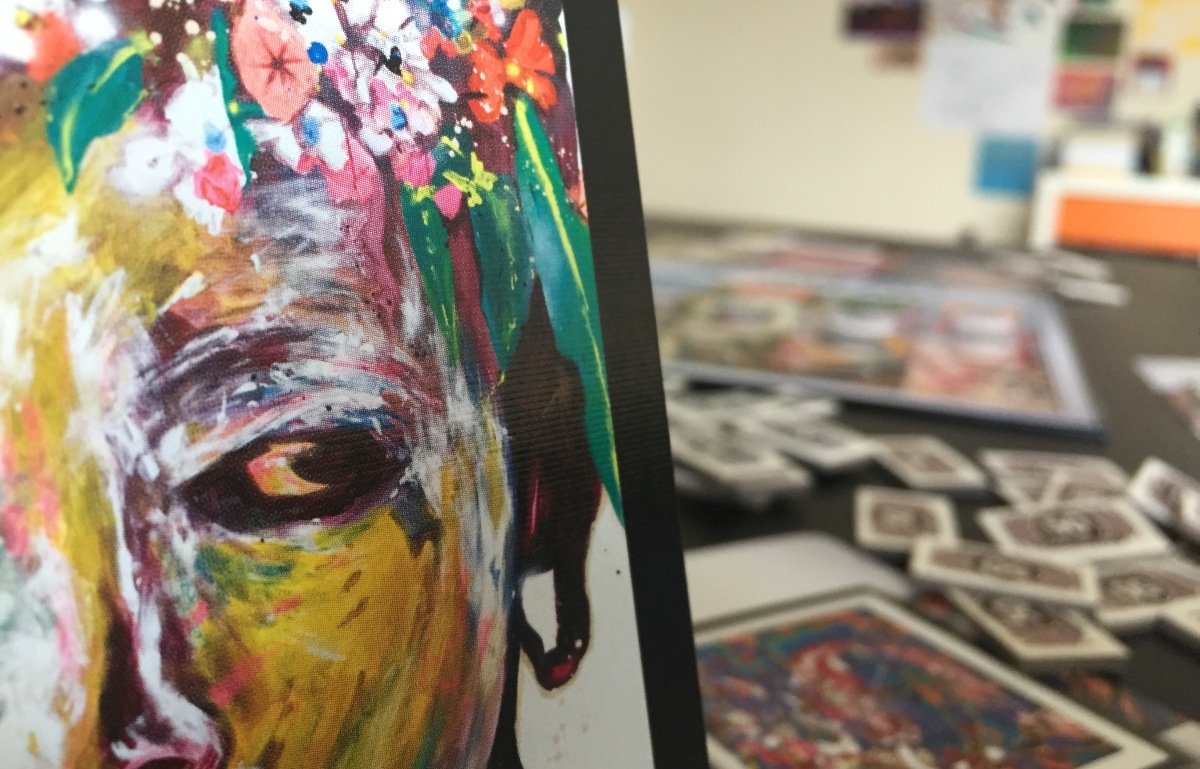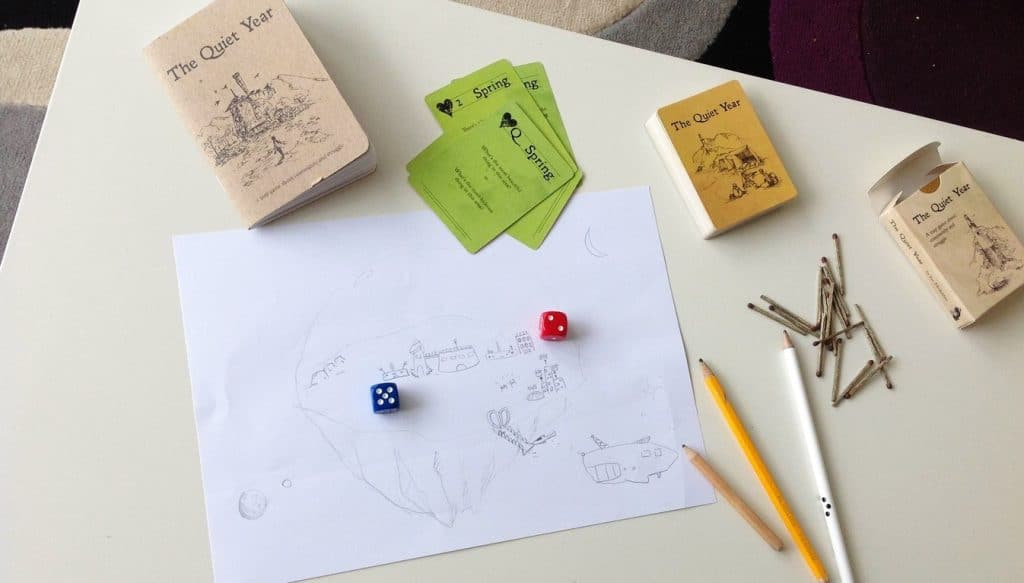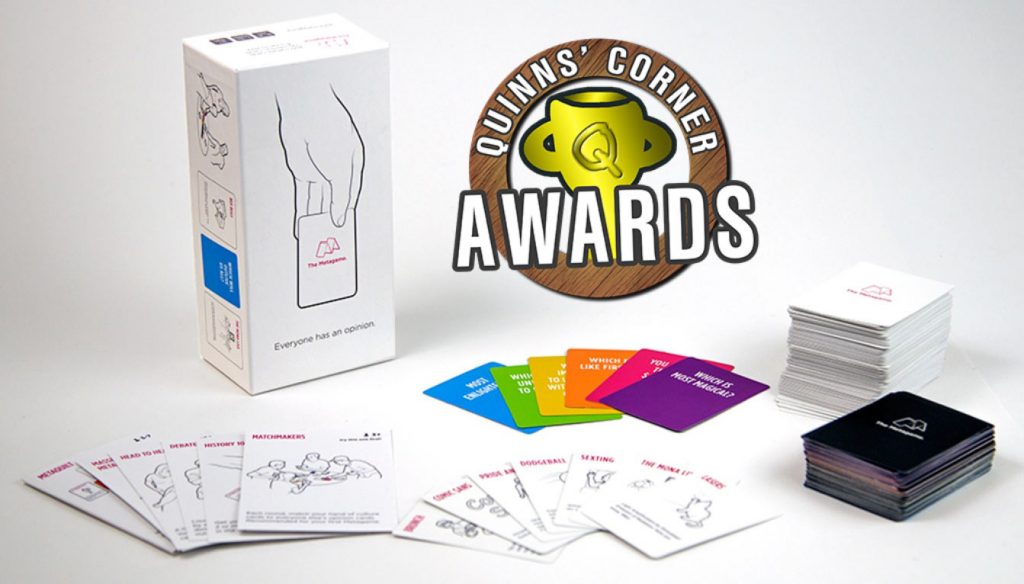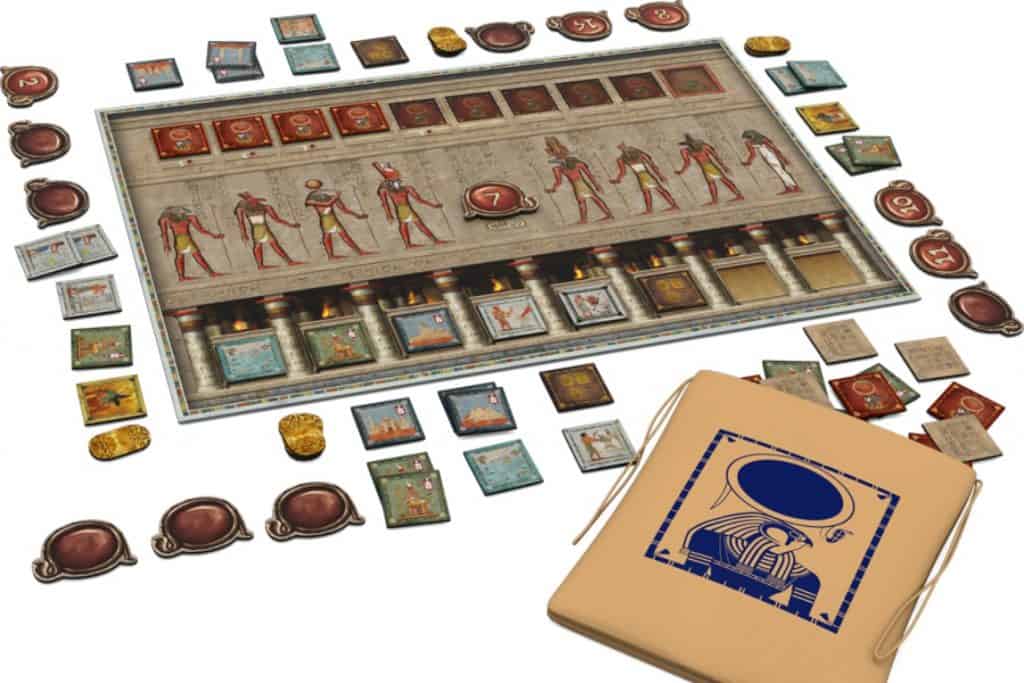Quinns: With CMON’s new edition of Modern Art, a game of blisteringly quick and dangerous art auctions, Shut Up & Sit Down continues its exploration of classic Knizia. Just who is Reiner Knizia? Where did he come from? What is he doing? We’ve interviewed him and I still don’t know. All I can tell you is that he’s responsible for more than 500 games, literally some of which are good.
But Modern Art isn’t just the oldest Knizia game we’ve ever reviewed. With the exception of 1981’s Consulting Detective, I think this is the oldest game we’ve reviewed, period. It came out way back in 1992, when Paul was celebrating his 30th birthday and Matt hadn’t even been born yet.
Can you feel it? This site is trembling with time right now. Slip inside my cardboard Tardis. Let’s see if the years have been kind.
3-5 players in Modern Art represent storied art galleries, and the winner is whoever can make the most money during a series of auctions. While this is a very involved game that builds to a dramatic finale, it’s quick to teach and supremely pacy.
When the game begins each player receives $100 million that they stash behind their screen (though the game’s a lot funnier if you imagine these tokens as $100, and that players are nickel and diming one another over near-worthless art). Everyone is also dealt a generous hand of cards depicting the modern art of Modern Art.
The game comes with 70 cards from five real-world artists, and in CMON’s new edition they’re an absolute delight. These cards are excellent quality, heavy and large, but what makes them so perfect is that the art is divisive. When a new artwork was unveiled at an auction my friends and I would all crane our necks and begin humming and smacking our lips like a table of turtles sharing a lettuce.
The previous edition of Modern Art, dubbed “Master’s Gallery”, used famous paintings, but this is so much better. Whether you enjoy these artists’ work or love to hate it, everyone has an opinion.
The manual suggests that when each player presents a card for auction they say a little bit about it, which feels entertaining and perfectly natural. It’s also a welcome, sweet, palette-cleansing moment in a game that’s otherwise a class in mathematics taught by Machiavelli.
SO, on your turn you select one of the artworks from your hand to put up for auction, but the card itself dictates whether it’s an open auction (with players yelling out numbers), a one-offer auction (in the style of Ra, with players getting to bid exactly once), a hidden auction (with players clutching a secret bid in their closed fist) or a fixed price auction (where the auctioneer states a price, and you can either buy it for that price or go suck an egg).
NOW, here’s the rub. If players buy a card from the auctioneer, they put the card in front of their screen and pay money to that player. As such, it’s theoretically possible to win Modern Art without winning a single auction, and just flogging cards to your friends. It’s also possible for the auctioneer to win their own auction if they want, but then the money they bid is paid to the bank.
BUT, here’s the other rub. Modern Art is played over four rounds, and a round ends whenever a fifth artwork by the same artist is put up for auction, whereupon instead of being sold that fifth card is immediately discarded (so if you choose to end the round by choosing the fifth card of a particular artist, you also deny yourself the sizeable profit of selling a piece on your turn). At this point all of the artworks that players have won at auction are transformed into cash… but the value of cards is based on how many of that artist’s cards were put up for auction that round.
The 1st, 2nd and 3rd most popular artists all sell for $30, $20 or $10, plus any tokens they accrued in previous rounds. The 4th and 5th most popular artists sell for $0, ignoring any tokens they earned in previous rounds.
Does that sound confusing? It is, which is the (perhaps divisive) centrepiece of the whole game. Let’s say two gloomy Sigrid Thaler paintings are the first cards to be sold in round 1 of the game. At this point, it looks like Sigrid will be the most popular artist that round. That would make her paintings worth $30 apiece, so buying them at $29 is a perfectly logical move, since you make $1 of profit and your friends get nothing. But that doesn’t take into account that everyone has limited money. And more importantly, it doesn’t take into account that anyone who hasn’t yet won a Sigrid Thaler might choose to put another of her works up for auction to make money… or they might auction off the works of other artists, which threatens to devalue Sigrid. What if Sigrid ends up being the third most popular artist, and only sells for $10? Then each $29 Sigrid Thaler you bought represents you setting fire to $19.
So like I say, it’s confusing as all hell, and that’s precisely why this game works. Maths isn’t fun. Auctions are fun, but only because of the panic, guesswork, hubris and mistakes that they bring about, and a game of Modern Art sees players winning auctions in one way or another, and then 60 seconds later performing a full-blown Arrested Development-style “I’ve made a huge mistake.”
And yet mistakes aren’t saddening and painful, like they are in jungle-harsh games like Power Grid or Reiner Knizia’s own Tigers & Pots, because of a beautiful escalation that occurs from round to round. Taking a bath on a painting in the first round might see the table laughing at your wasted $9, but it’s fine, because in the fourth round you might make $169 from selling just two artworks using a “Double auction” card. It’s ok! It’s fine. And since everyone’s money is hidden behind screens, you might be losing, but you’re never quite sure.
I’m excited to say that playing Modern Art instantly reveals it to be one of those old classics, like Cosmic Encounter, El Grande or Diamant, a.k.a. Incan Gold, where the instant you start playing it’s sharply obvious why it’s stuck around for such a long time. It’s not just that it’s “fun”. Fun is easy! Just sitting with your friends without a game is often fun. Fun, in this hobby, is forgettable.
Instead, just as El Grande offers an area control game that feels like you’re basking in everything that the genre can be, so Modern Art offers auctions where simply hearing what your friends bid is fascinating and awful and clever and cruel and unfair and hilarious and – yes – fun.
It comes down to the fact that the puzzle is just too complicated for any kind of a solution. Putting an artwork up for auction instantly increases its value, but other people owning that art dissuades people from increasing the value further. Selling art from your hand is free money, but it’s also giving your friends opportunities to make money. I was bursting out laughing at blind auctions in this game because all too often players would reveal their bids and they would be $4, $33, $30 and $48(!). I’ve experienced open auctions where two players are outbidding one another for a piece of art that the rest of the table thinks is valueless, only for the laughter at these two bidding idiots to gradually dry up as the bidding gets higher and higher. Are they idiots? Or are they the only two people who really understand the game? Wait, no. They’re idiots. They have to be. But are they?
On top of this mysterious, silly allure, with Modern Art being easy to learn and impossible to master, it’s also simply a game where everyone’s playing all the time. There’s no waiting for your turn because everyone can be involved in every auction, and there aren’t even any games of Modern Art that play out the same way, because the instant people think they know how to play (e.g. “Never end a round, because the money you get from selling art is too valuable!” or “Save your best cards for later rounds, when they’ll make you more money!”) that wisdom changes the game, subtly altering the established wisdom.
That said, one thing is for certain. Rafael Silveira is rubbish.
The only thing I’m umming and ahhing about is whether to give it the SU&SD Recommends seal of quality. I suppose I have to because we gave it to Tigris & Euphrates, but I need to give it the same caveat:
Usually, our seal means a game that anyone will love. It sits most comfortably on phenomenal, accessible games like Codenames, Mysterium or Flamme Rouge. The truth is, Modern Art could be flat-out unpleasant for players who can’t comfortably juggle numbers and profit margins in their heads. Since every act you make is so public, and the game is so tricky, there’s inevitably a lot of laughter at people who make a mistake, and I can see that making borderline-discalculic people pretty upset.
But equally, I can’t not give it the seal. I mean, it’s a masterpiece. I don’t know whether I prefer this to the crowdpleasing Ra, but I do think Modern Art is the smarter auction game. It’s a masterpiece. Like an art gallery, it’s a game that I know I’ll periodically visit, and spend the rest of my life thinking about.
And hey! This is cool. Included in the back of the manual is information on the artists featured in the game.
I never thought I’d say it, but CMON has made a nice ol’ box. If this is a sign of things to come, you can sign me up.

